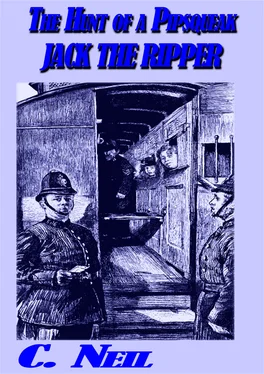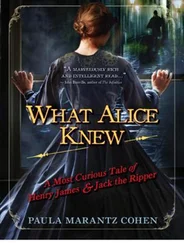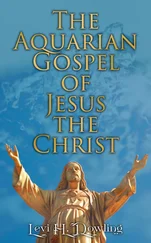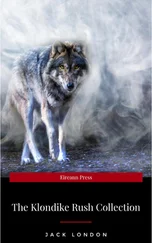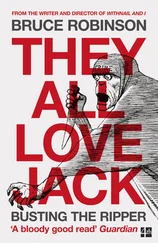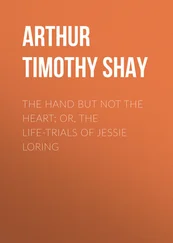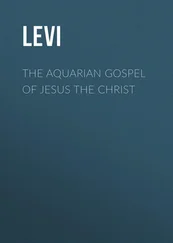C. Neil - The Hunt of a pipsqueak Jack the Ripper
Здесь есть возможность читать онлайн «C. Neil - The Hunt of a pipsqueak Jack the Ripper» — ознакомительный отрывок электронной книги совершенно бесплатно, а после прочтения отрывка купить полную версию. В некоторых случаях можно слушать аудио, скачать через торрент в формате fb2 и присутствует краткое содержание. Жанр: unrecognised, на немецком языке. Описание произведения, (предисловие) а так же отзывы посетителей доступны на портале библиотеки ЛибКат.
- Название:The Hunt of a pipsqueak Jack the Ripper
- Автор:
- Жанр:
- Год:неизвестен
- ISBN:нет данных
- Рейтинг книги:4 / 5. Голосов: 1
-
Избранное:Добавить в избранное
- Отзывы:
-
Ваша оценка:
- 80
- 1
- 2
- 3
- 4
- 5
The Hunt of a pipsqueak Jack the Ripper: краткое содержание, описание и аннотация
Предлагаем к чтению аннотацию, описание, краткое содержание или предисловие (зависит от того, что написал сам автор книги «The Hunt of a pipsqueak Jack the Ripper»). Если вы не нашли необходимую информацию о книге — напишите в комментариях, мы постараемся отыскать её.
The Hunt of a pipsqueak Jack the Ripper — читать онлайн ознакомительный отрывок
Ниже представлен текст книги, разбитый по страницам. Система сохранения места последней прочитанной страницы, позволяет с удобством читать онлайн бесплатно книгу «The Hunt of a pipsqueak Jack the Ripper», без необходимости каждый раз заново искать на чём Вы остановились. Поставьте закладку, и сможете в любой момент перейти на страницу, на которой закончили чтение.
Интервал:
Закладка:
CHARLES BRETTON, Witness but not not called to Mary Ann Nichols' inquest. Born 1859, Bolinger, Essex. In 1881 he was listed as a horse-keeper living at 25 Buck's Row, Whitechapel. Married to Susannah b.1863, Stepney.
Employee at Harrison Barber & Co, Horse slaughterers, Winthrop Street. At about 12.20am, 31st August 1888, Bretton and fellow worker Henry Tomkins left the slaughterhouse for a stroll to Wood's Buildings and returned to work at 1.00am. Bretton later accompanied Tomkins and James Mumford to see the body of Mary Ann Nichols in Buck's Row. In 1891, Charles a horse-slaughterer and Susannah were living at 42 Winthrop Street, almost opposite the slaughterhouse. By 1901 his wife Susannah is listed as single, working as a beer seller and living at 74 High Street, Bromley - it appears that Charles died in December 1899 in West Ham. There are no records of the couple ever having children.
SARAH COLWELL, Resident of Honey's Mews, Brady Street, which lies about 120 yards from Buck's Row. She told the press that at the time the murder of Mary Ann Nichols was allegedly committed, she heard a woman running along Brady Street shouting "murder, police!". Mrs. Colwell stated that she could only hear the one set of footsteps, despite being sure that the woman was running away from someone. Another press account has it that Mrs. Colwell was woken by her children who said that somebody was trying to gain entry to the house. This time, the scream of "Murder! Police!" was heard five or six times, gradually fading away. The shouts seemed to be going in the direction of Buck's Row. The generally accepted time of this incident is 12.00am, making it unlikely that it was the screams of Mary Ann Nichols whose body was still warm in places upon its discovery at 3.40am. It appears that nobody came forward to identify themselves as the woman involved.
CHARLES CROSS, Born Charles Allen Lechmere in 1849, St Anne's, Soho. In 1858, Charles' mother remarried, to Thomas Cross, a policeman and Charles took his surname. Married Elizabeth Bostock in 1871, and worked as a carman for Pickford's in Broad Street, living at 22 Doveton Street, Cambridge Road, Bethnal Green in 1888. Cross left home for work at 3.20am on the morning of 31st August 1888; by about 3.40am he was passing along Buck's Row when he saw what he originally believed to be a tarpaulin lying on the ground in front of the gates to a stable yard. On closer inspection, he found that it was the body of a woman and at that moment he called to Robert Paul who was also walking down the street. Cross felt one of the deceased's hands and finding it cold, said "I think she is dead". Paul asked Cross to help move the woman, but Cross refused. Not wanting to be late for work, the two men walked on and meeting PC Jonas Mizen at the junction of Hanbury Street and Baker's Row, informed him of their find. Cross said that the woman was either dead or drunk, though at the time, he did not think the woman had been murdered. He died in 1920. Charles Cross has been mooted as a potential suspect for the murder of Mary Ann Nichols.
THOMAS EDE, at Mary Ann Nichols' inquest. A signalman employed by the East London Railway Company who claimed to have seen a suspicious man on the railway line on the morning of the 8th September 1888. At the inquest on the 17th September, coroner Wynne Baxter challenged the relevance of Ede's evidence, but allowed him to continue nonetheless. On Saturday morning, 8th September, Ede was coming down Cambridge Heath Road when he saw a man on the opposite side of the road, just outside the Forester's Arms public house. The man's peculiar appearance made Ede look at him; he appeared to have a wooden arm which was hanging at his side. The man then put his hand down, revealing about four inches of knife-blade sticking out of his trouser pocket. There were three other men present who were also watching and Ede spoke to them. He then followed the man who, realizing he was being followed, quickened his pace before being lost under some railway arches. The man was described as being about 5ft 8in in height, about 35 years of age with a dark moustache and whiskers. He wore a double peaked cap, dark brown jacket and a pair of overalls and dark trousers. He walked as though he had a stiff knee and had 'a fearful look about the eyes'. He had the appearance of a mechanic (he was not muscular) and the overalls were clean. Ede could not tell what sort of knife it was. He was later recalled to the inquest (this time as William Ede) to state that he had since seen the man again and had ascertained that he was one Henry James, a well-known but harmless local lunatic. James did not, incidentally, have a wooden arm.
EMMA GREEN, Witness at Mary Ann Nichols' inquest.
Mrs. Green, a widow, lived at New Cottage, Buck's Row with her daughter and two sons. Her bedroom (which she shared with her daughter) was at the front of the house, almost overlooking the murder site. She and her daughter had gone to bed at 11.00pm on the night of 30th August 1888 and the two sons had retired earlier at 9.00pm and 9.45pm respectively.
Nobody had heard anything unusual during the night, despite Mrs Green being a light sleeper. The first she heard of the incident was when she awoke to a knock at the door at 4.00am - she opened a window and was able to see several constables and other men, as well as the body, even though it was still not light. It was her son, James, who washed the blood from the pavement with a bucket of water once Nichols' body had been taken to the mortuary
JAMES HATFIELD, Witness at Mary Ann Nichols' inquest. Born c.1830, Spitalfields. An inmate at the Whitechapel Workhouse, occupation given as 'Dock Worker'. After arriving at the workhouse mortuary in Old Montague Street at about 6.30am, 31st August 1888, Hatfield assisted Robert Mann in undressing Nichols' body.
They first removed the Ulster and put it on the ground. Hatfield then removed the jacket and put it with the Ulster. Apparently, he did not have to cut the dress to remove it, but did cut the two bands of petticoats before tearing them down with his hands. Nichols was also wearing a chemise, which Hatfield tore down the front. The two men apparently did this in order to have the body ready for examination when the doctor arrived. Hatfield did not recall being given any instructions not to touch the body and said that nobody else was present at that time. When the police arrived, it was noted that the band on one of the petticoats bore the mark of the Lambeth Workhouse and Hatfield was requested by Inspector Joseph Helson to cut this piece out. He also did not recall the deceased wearing stays, though the inquest foreman reminded Hatfield that he had seen stays in his presence and remarked that they were short. At this point, Hatfield admitted that his memory was bad.
EMILY HOLLAND, Mary Ann Nichols' inquest. Born c.1838, aka Ellen Holland, 'Nelly', Jane Oram A friend of Nichols who shared a room with her and four other women at Wilmott's Lodging House, 18 Thrawl Street. Holland positively identified the body of Nichols after Mary Ann Monk suggested that the deceased may have been the woman she knew from the Lambeth Workhouse.
Holland had returned from watching a fire at the Shadwell Dry Dock at about 2.30am on the 31st August 1888 and met Nichols at the junction of Osborn Street and Whitechapel Road. Nichols claimed that she had earned her doss money three times that night, but had spent it (she was by this time particularly drunk) and was adamant that she would earn it again, refusing to return to Wilmott's with Holland. She allegedly claimed she wanted to go somewhere where she could share a bed with a man presumably The White House at 56 Flower and Dean Street. This was the last reported sighting of Nichols before her death. Emily Holland later received two convictions at Thames Magistrates Court for being drunk and disorderly in October 1888.
Читать дальшеИнтервал:
Закладка:
Похожие книги на «The Hunt of a pipsqueak Jack the Ripper»
Представляем Вашему вниманию похожие книги на «The Hunt of a pipsqueak Jack the Ripper» списком для выбора. Мы отобрали схожую по названию и смыслу литературу в надежде предоставить читателям больше вариантов отыскать новые, интересные, ещё непрочитанные произведения.
Обсуждение, отзывы о книге «The Hunt of a pipsqueak Jack the Ripper» и просто собственные мнения читателей. Оставьте ваши комментарии, напишите, что Вы думаете о произведении, его смысле или главных героях. Укажите что конкретно понравилось, а что нет, и почему Вы так считаете.
